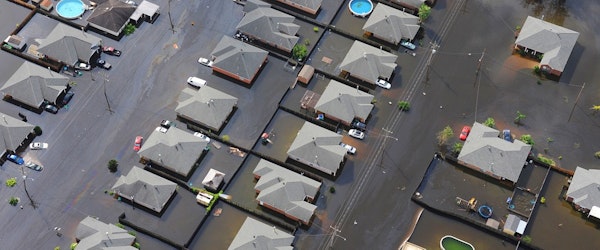
High Insurance Costs and Climate Risks Push Homeowners in Vulnerable Areas to the Brink
Tuesday, September 9th, 2025 Catastrophe Insurance Industry Property Risk ManagementThe 2025 Realtor.com Housing and Climate Risk Report highlights a mounting challenge for homeowners and insurers alike: the growing cost and limited availability of property insurance in climate-vulnerable markets. With 26.1% of U.S. homes—valued at $12.7 trillion—exposed to severe flood, wind, or wildfire risks, insurance premiums are rapidly rising in areas least equipped to absorb the financial burden. Lower-value homes in markets such as Miami, New Orleans, and Cape Coral face the highest premium-to-market value ratios, with rates in Miami reaching a staggering 3.7%.
Flood risk, in particular, remains vastly underestimated. Although nearly 4 million homes are located in FEMA-designated Special Flood Hazard Areas (SFHAs), new data reveals that nearly 6 million homes—worth $3.4 trillion—face severe flood risk when accounting for rainfall and climate change. Worryingly, many of these properties fall outside FEMA flood zones, leaving homeowners unaware and often uninsured. Metros like New Orleans, Palm Bay, and Chattanooga show the largest gaps between actual and perceived flood risk.
Wind risk presents another major exposure area, with nearly 1 in 5 U.S. homes vulnerable to hurricane-force winds. In 14 metropolitan areas across the Gulf and Southeast—including Miami, Houston, and Tampa—100% of homes face extreme wind risk, triggering higher deductibles and out-of-pocket costs. Under a standard HO-3 policy with a 5% hurricane deductible, homeowners may need to cover $20,000 in damages before insurance kicks in.
Wildfire risk is also escalating, particularly in California, where nearly 40% of the nation’s high-risk homes are located. As private insurers withdraw, more residents are turning to last-resort options like the California FAIR Plan, which has seen policy counts and total exposure skyrocket since 2021. The wildfire protection gap is most pronounced in Los Angeles, Riverside, and Colorado Springs, where over half of residential property value is exposed. As these risks intensify, claims professionals must closely monitor regional vulnerabilities, coverage limitations, and shifting insurer appetite in high-risk zones.





